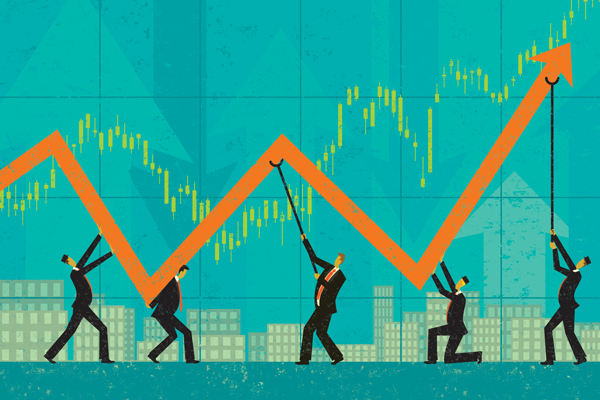If this were the greatest economy in the history of the world, as our president said several times last year, it wouldn’t have suffered paroxysms of pain in the last three months at the prospect of a few 25-basis-point increases in the federal funds fate the way it did last fall.
Circumstances vary, but as far as I can tell the best economy America ever enjoyed came in the 1960s when it racked up year after year of 5% GDP growth and employment surged 32%. Many attribute this to the so-called Kennedy tax cuts, which were enacted in 1964 and 1965. Top personal income taxes were cut from 90% to 70%, while corporate taxes were cut from 48% to 22%.
But there were also huge increases in social spending to fund the Great Society and defense outlays for the Vietnam War. When the bills for big spending and excessive reliance on cheap energy came due in 1970s, stagflation confounded the traditional solutions of Keynesian economics.
Some economic historians would point to the period between 1870 and 1900, when America’s economy expanded at a rate rivaling today’s emerging-market economies. Agricultural productivity surged and transportation costs plummeted, while nascent industries proliferated and quickly caught up with those in Germany and England. But this period was afflicted with constant booms and busts, and the period following the Panic of 1893 is sometimes viewed as a forgotten depression.
Looking for more recent reference points, most advisors and their clients look to the 1980s and 1990s as the best of times. Certainly the advent of PC technology and the internet created a revolution of sorts, and demographics boosted the economy as baby boomers entered their most productive years.
Interviewing executives at money management firms for this issue’s cover story, I couldn’t help but be struck by how smart people extrapolated the experience of the 30 years between 1979, when Paul Volcker became Fed chairman, and 2008 into their vision for the next five to 10 years. Several sharp economists and money managers said that they thought the U.S. economy could handle another six or seven increases of 25 basis points in the fed funds rate.
The divergence between the optimism of the asset management community and executives in the real economy is stunning. Nearly half of the chief financial officers surveyed by Duke University see a recession in 2019, and 82% see one by 2020. Personally, I have no idea, but CFOs are pessimists by nature and asset managers, especially on the equity side, tend to look for the upside.
President Trump may exaggerate current economic strength, but the bond market has told us this fall he’s right about one thing: The idea among many that the U.S. economy can handle a series of quarterly rate hikes for the next two years is way off base. Even if it could, the impact on many emerging and developed markets would be devastating.
Email me at [email protected] with your opinion.
When The President Is Right
January 2, 2019
« Previous Article
| Next Article »
Login in order to post a comment








